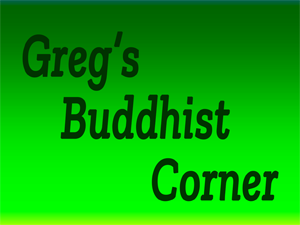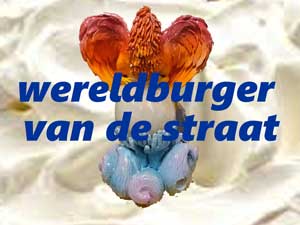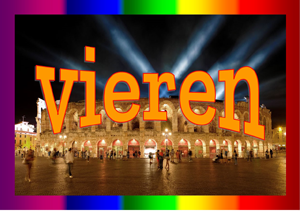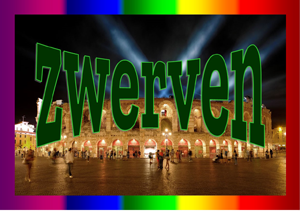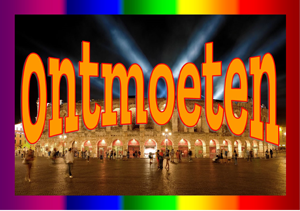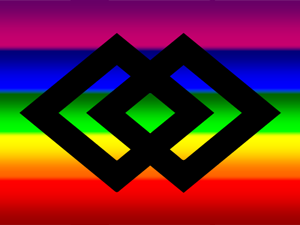The Art of Healing by the Master of Healing
By Greg Suffanti
QFWF No. 13. December 2019
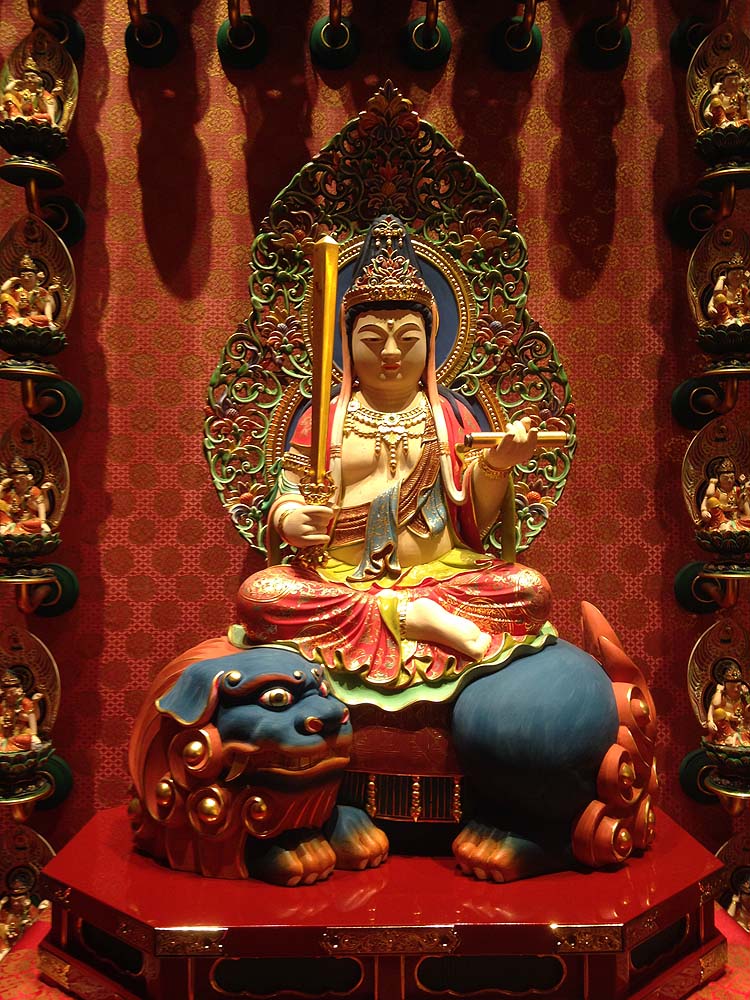
Once upon a time in India there lived an Indian prince named Siddhartha… although he was born an ordinary man, through various practices he achieved the state of Buddhahood or Enlightenment sitting under a Bodhi tree one night.
First convinced no one would believe his teachings on how to achieve this state, his primary disciples later convinced him to share his realizations, and he subsequently spent the next forty years traveling and teaching until he passed into Nirvana at the age of eighty.
According to Chinese legend, one day the Buddha stopped in Vaisali while on a teaching tour and rested under the Tree of Music[2]. One of his students, the Bodhisattva Manjushri, who was not yet the Buddha Manjushri, asked about healing practices. Siddhartha, who was now known as Shakyamuni Buddha, having come from the Shakya clan responded:
“East of this world, past countless Buddha-lands — more numerous than grains of sand in ten Ganges rivers — there exists a world called Pure Lapis Lazuli. The Buddha of that world is called the Medicine Buddha Lapis Lazuli Radiance Tathagata, Arhat, the Perfectly Enlightened, Perfect in Mind and Deed, Well Gone, Knower of the World, Unsurpassed Being, Tamer of Passions, Teacher of Gods and Men, Buddha-World-Honored One[3].”
Mahayana Buddhists pray to the Medicine Buddha for healing illness and for success in life
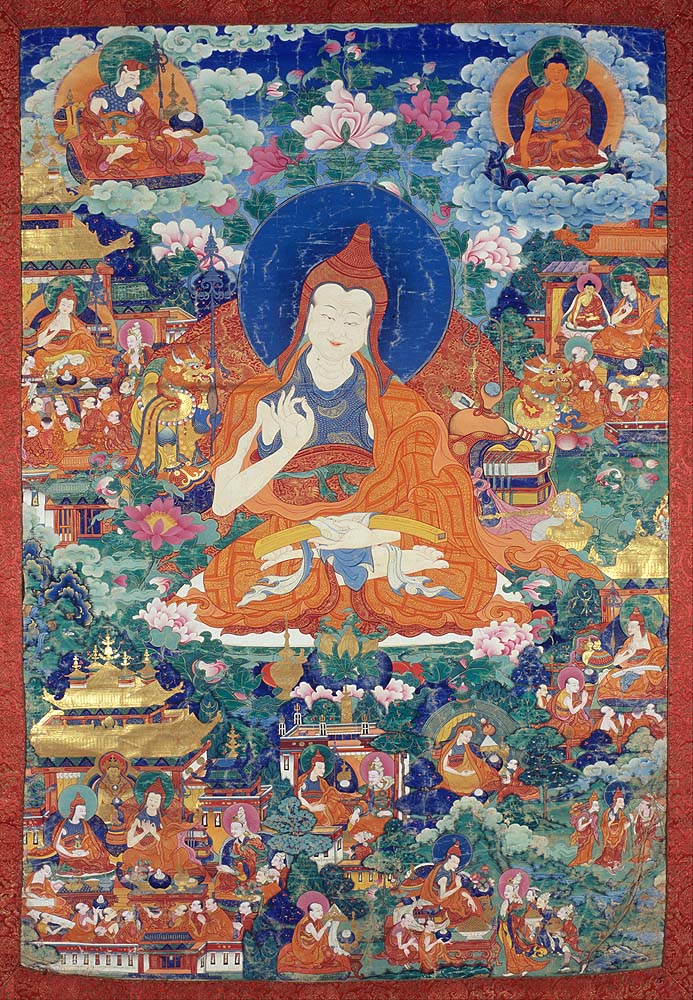
The actual origins of the history of the Medicine Buddha are not known. The belief in the Medicine Buddha is shared by Mahayana Buddhists in countries like Tibet, China, Korea and Japan.
Theravada Buddhists, adhering strictly to the teachings of Shakyamuni Buddha, in countries like Thailand, Shri Lanka and Myanmar, do not share the tradition of the Medicine Buddha with their Mahayana counterparts; they have belief in only one Buddha, Shakyamuni.
The Medicine Buddha sutra and practices are extremely popular to this day in Mahayana Buddhist lands, and in China, the Medicine Buddha sits at the top of the Buddhist pantheon of deities, along with Shakyamuni Buddha, and Amitabha Buddha. Adherents pray to the Medicine Buddha for healing, but also for success in any sort of venture, including business activities.
“Evidence of birch bark manuscripts containing the Medicine Buddha Sutra were first discovered at a Mahasamghika Monastery near Bamujon, Afghanistan. These texts were dated back to the 7th century CE at the time of the ancient Silk Road[5].”
Buddhism as a religion flourished via the Silk Road trading route, spreading from India to China and Tibet and then to other lands like Japan and Korea, via maritime shipping routes. The tradition of the Medicine Buddha was brought “to Tibet by the great Indian Buddhist master Abbot Shantarakshita in the 8th century and was given to the Tibetan king Trisong Deutsan to promote health, prevent disease, give protection against black magic and to stabilize the ecological system from natural disasters[6].”
“It was an AIDS diagnosis that brought me to Buddhism”
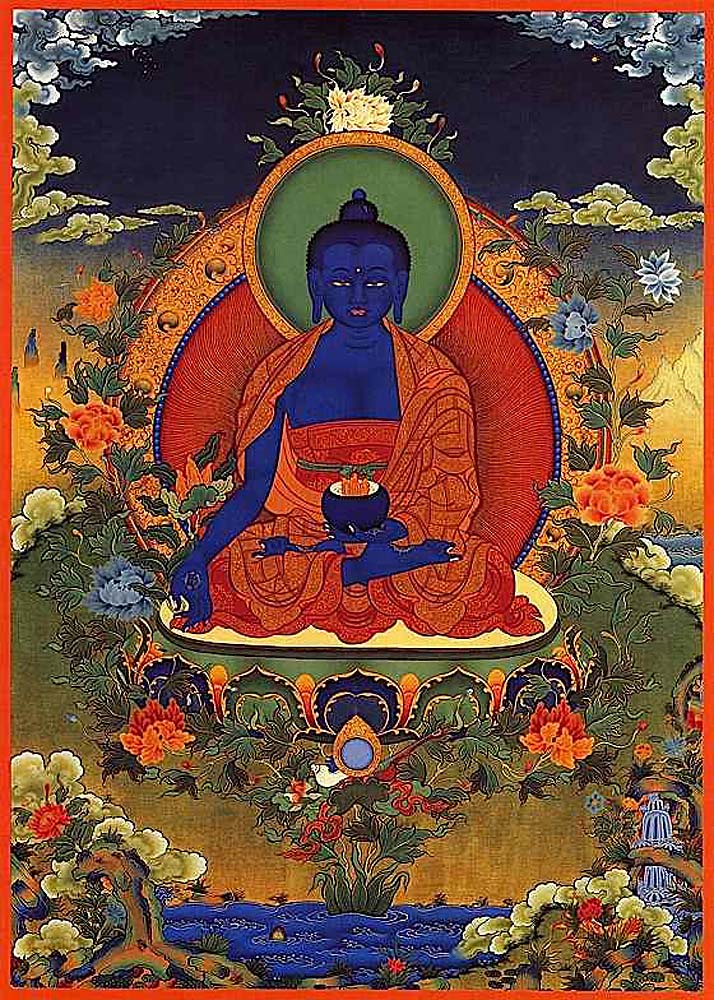
It was illness that brought me to Buddhism in the first place. I was living and working in Seattle in 1996 when I learned that I was HIV positive after my then partner fell suddenly ill and discovered he had PCP pneumonia, one of the illnesses that constitutes an AIDS diagnosis. I had less than 200 T cells, the fighter cells that keep us healthy, and so I was also given a diagnosis of AIDS and informed that I should be prepared to die at a young age. In that time, a diagnosis of AIDS meant certain death, as there were no effective treatments available. I was 32 and my world quickly fell to pieces. My 29 year old partner at the time, like so many others, would never reach the age of forty. It was a waking nightmare of a world, when predominantly young, healthy males aged overnight, and often became crippled and blind, before passing away from a panoply of terrifying illnesses.
“Pain had made me ready to learn”
I lived in constant fear of what would happen next. It is no wonder that I immediately responded to Buddhism when I read in a book that the Buddha said, “pain has made you ready to learn.”
It had, and my fear propelled me further as I needed to believe in something that could help me in any way possible. I was lucky, because Buddhism teaches that fear and faith are the two main reasons to take refuge and traverse the Buddhist path. This teaching mirrors my own direct experiences.
The crucial point regarding illness and its origins is that Buddhism asserts that the mind is the primary cause of illness and NOT external causes
Living with profound illness for so many years has fundamentally changed who I am as a human being, and many of those changes are positive and profound.
On paper, I’m fully recovered in the sense that the virus has been undetectable for nearly ten years. Much of what I would call my “recovery” is definitely due to my involvement with Buddhism, and that certainly includes the Medicine Buddha and his mantra.
The other part of my healing came from improved medicines that subdued the HIV virus. I want to be clear on that, because even His Holiness the Dalai Lama exhorts fellow Buddhists to take medicine if available when they are sick, especially medicine from the West, as it is often cutting edge and particularly powerful.
Buddhism does not advocate healing serious illness through deity devotion and meditation alone. The important factor here is that Buddhism asserts that illness comes from the mind, and NOT from external causes, which are seen as secondary or conditional factors. This is the crucial point to understanding Buddhism’s stance on the cause of illness.
“I sometimes wonder if I healed because I live in a country with genuine social justice?”
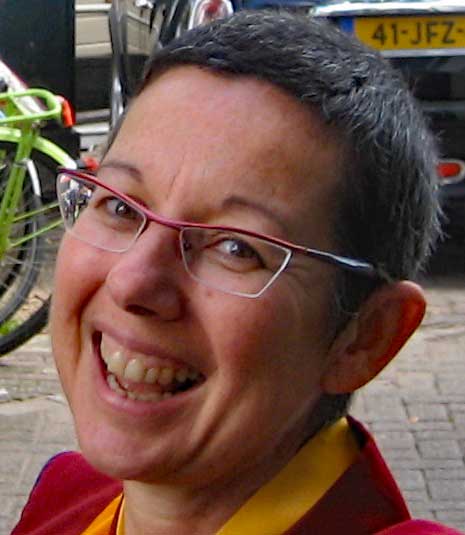
Although I had been reading books about Buddhism, it wasn’t until I left America for Amsterdam in March of 2000 that I began formally studying Tibetan Mahayana Buddhism with then resident teacher, Ven. Kaye Miner, at Maitreya Instituut in Amsterdam.
I figured that since I was going to die, I wanted to die in a place that at least considered me an equal human being under the eyes of the law.
I also moved to Amsterdam determined to find a teacher and study Buddhism. Things were different back then in America, and despite all the progress, there are still some LGBTQ people in parts of America that don’t enjoy the same equality and protection under the law as their European brothers and sisters.
Even though I was sick, I managed to find a job as a caregiver in Amsterdam, and eventually became a Dutch citizen in 2008.
Universal health coverage
Another primary consideration for my move was that people in Holland, like the rest of Europe, have universal health coverage.
Unfortunately, to this day, one of the primary reasons for bankruptcy in America is inability to pay medical bills.
I sometimes wonder if I healed simply by not having to live under the stress of a system in which being sick often means catastrophic changes in living standards?
The hundreds of thousands of homeless in America are testament to a failed system of social justice; the numbers of addicted and those dead by drug overdose, a testament to the failure of a purely capitalistic economic model, lacking true social equality and justice… and devoid of compassion. The more than 400,000 deaths from drug overdoses this century in America are now called “deaths of despair”.
From the Buddhist perspective, compassion is essential for healing. An uncompassionate healthcare system in America is something I’ll never miss. I was allowed to be sick in Holland, and I was given help to heal, without losing my home or my dignity. Healthcare apartheid as national policy from a rich land remains shameful in my opinion.
“I questioned my own faith until I began questioning if knowledge was more important than faith”
As I approach my twentieth anniversary of moving to Holland and becoming a Buddhist, it should come as no surprise that I feel a great affinity for the Medicine Buddha.
From my perspective, the Medicine Buddha practice has helped me beyond just conquering serious illness, it has opened my eyes and heart to the suffering of others and the great need for compassion in the world at this time.
But who is the Medicine Buddha actually? And how can these practices of healing help someone? And why is compassion so important for healing?
In Tibetan Buddhism, there are seven Medicine Buddhas plus Shakyamuni Buddha.
The main Medicine Buddha is blue. Why blue? As I researched this article, I realized that I actually knew quite little, and I found myself questioning my own faith, until I began to wonder if knowledge was more important than faith. These are the questions I’m looking to answer in this article.
“In my eyes I had become everything a young person would never want to be: sick and poor”
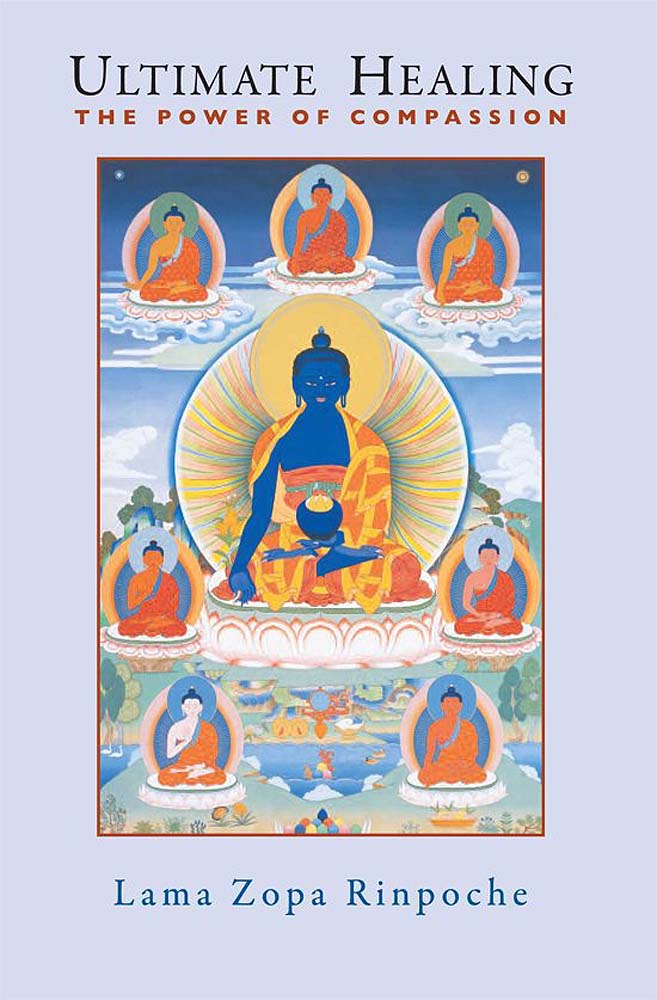 I took refuge with Lama Zopa Rinpoche in 2001, the same year as his book, “Ultimate Healing” was published. I read, re-read and re-read again this book about the Medicine Buddha and other healing practices, giving it away at some point and not really thinking about it again, as I was busy working and studying the Lam Rim (an overview of Tibet Buddhism) with Ven. Kaye Miner until 2004, and then following her course on Shantideva’s Bodhisattvacharyavatara until 2006.
I took refuge with Lama Zopa Rinpoche in 2001, the same year as his book, “Ultimate Healing” was published. I read, re-read and re-read again this book about the Medicine Buddha and other healing practices, giving it away at some point and not really thinking about it again, as I was busy working and studying the Lam Rim (an overview of Tibet Buddhism) with Ven. Kaye Miner until 2004, and then following her course on Shantideva’s Bodhisattvacharyavatara until 2006.
I was working as a caregiver, dealing with people who were either severely handicapped, or dying, or often both. My concern at that time was more about refuge, and literally about not having to be reborn in hell, as an effective treatment remained elusive and I was in a constant state of stress from feeling ill all of the time; from both the HIV virus and the side effects of the medicines themselves, which for many years felt as awful and debilitating as the illness itself. Death’s hand always felt close in those years.
I wish I could tell you that I prayed to the Medicine Buddha and the next day I was healed. I cannot. Also, I now understand why I’ve needed these twenty years, as the key to healing is through love and compassion, and this must begin with the self. It is a long process and I think real growth is often slow, even taking steps backwards at times… or so it can feel.
“I was terrified of myself too!”
Although I felt great compassion for the people I helped, and tried to help them anyway I could think of, I had contempt for myself and deep shame for having an illness that everybody was terrified of.
I think it’s fair to say that I was terrified of myself too! Even in the gay world, even today, someone who has HIV is still considered a pariah. My single HIV positive friends tell me they are constantly asked if they are “clean,” meaning not infected, whenever they meet a potential suitor.
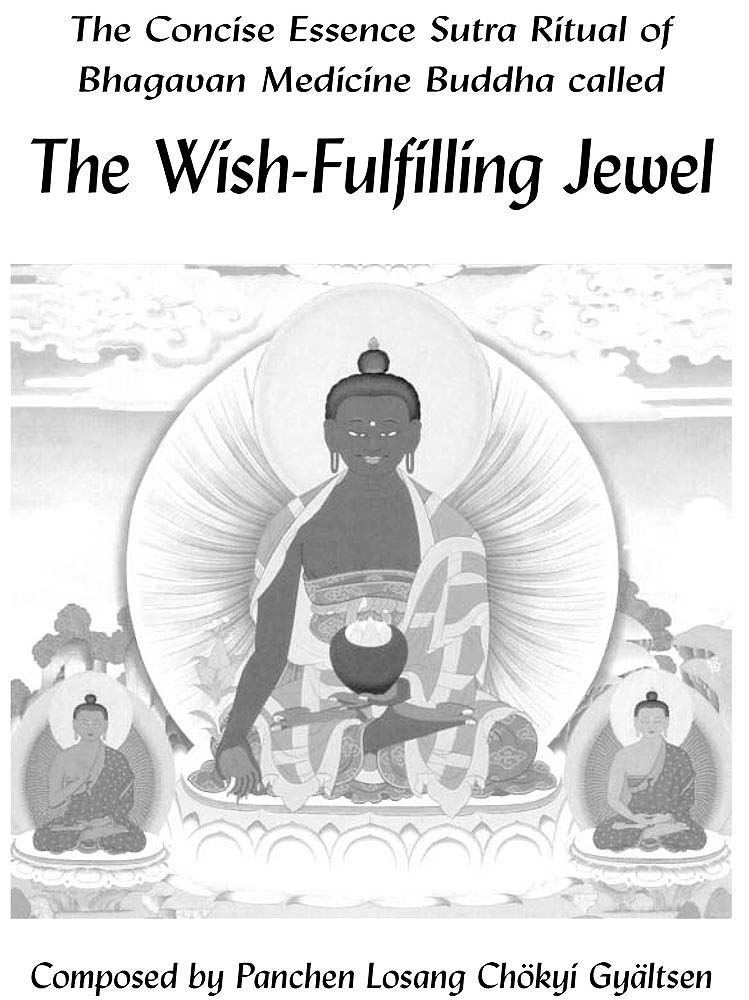
In the majority of cases, from what I’ve heard and experienced when single, telling someone you’re “positive” means the beginning of the end. I hid my illness and built an iron house of shame around me, which eventually became my prison. No wonder I had a burnout in 2009 and no wonder I took so long to heal. In my eyes I had become everything a young person would never want to be: chronically sick and poor.
Lama Zopa gave a Great Medicine Buddha initiation in 2008, and I recall being very happy to receive the initiation, as my HIV treatment until that time had represented one depressing medical failure after the other.
At this point I began saying the Medicine Buddha mantra every day, and currently also participate in bi-monthly Medicine Buddha pujas at Maitreya Instituut in Amsterdam where I am a volunteer.
Finally, in 2009, I won a medical lottery to begin an experimental drug. I was one of 200 hundred people selected in the Netherlands, and was told that if this treatment failed, there was nothing more that could be done.
I’ll never forget opening the bottle and seeing the pills for the first time: they were Medicine Buddha blue!
“Meditation is using our own mind to heal ourselves” Lama Zopa
In “Ultimate Healing”, Lama Zopa says that
“disease and all the other problems in our life are caused by unhealthy minds. An unhealthy mind is any mental action that disturbs us and makes us unhappy, and an unhealthy body comes from an unhealthy mind.[9]”
Lama Zopa also says that
“while external medicine can be taken to heal a physical sickness, inner medicine needs to be taken to heal the cause of the disease, and to ensure that we never experience disease again. What is this inner medicine? Meditation. Meditation is using our own mind, our own positive attitudes, to heal ourselves[10].”
Both medicine and meditation come from the Latin root word medeor, meaning ‘to heal or make whole’.
The Medicine Buddha is as much about mind as it is body
Science continues to confirm many of Buddhism’s teachings, showing not only the medical benefits of meditating, but even explaining the scientific reality of the nature of all things with quantum physics, just as described by Buddha Shakyamuni in his teachings on emptiness more than 2,500 years ago.
“Medicine Buddha is as much about mind as it is body. Empirical evidence shows that when we meditate, it triggers a self-repair mechanism in our own bodies. We stop producing cortisol and adrenaline, and instead enhance the production of immune-boosting endorphins and serotonin, arming our body against invasive bacteria, viruses and other imbalances. These changes also promote positive mental states[11].”
In Sanskrit, the Medicine Buddha, Bhaisajyaguru, means ‘the Master of Healing’
The Medicine Buddha is known as (Sanskrit) Bhaisajyaguru, which means master of healing. One of the earliest known Medicine Buddha Sutras, called the Bhaisajya-guru-vaidurya-prabha-raja Sutra, has been found in the ancient N.W. Indian kingdom of Gandhara dating from before the 7th century[12]; what would be modern day Afghanistan and Pakistan.
The Medicine Buddha has many names depending on the land where he is revered[13]:
- Tibet: Sanye Menla or just Menla
- China: Yaoshifo
- Japan: Nyorai or Yakushi
- Korea: Yaksabul or Yaksayeorae
The Medicine Buddha Mantra
Lama Zopa says that
“Manjushri requested the eight Tathagatas (Guru Shakyamuni Buddha and the seven Medicine Buddhas) to reveal a special mantra that would make prayers they (the eight Tathagatas) made in the past (prayers to be able to actualize the happiness of sentient beings by attaining the path to enlightenment and pacifying various problems, to be able to see all the Buddhas, and for all wishes to be quickly realized) to quickly come to pass, especially those sentient beings born in the time of the five degenerations who have small merit and who are possessed and overwhelmed by various diseases and spirit harms[14].”
The Medicine Buddha mantra is:
TADYATA OM BHEKHANDZYE BHEKHANDZYE MAHA BHEKHANDZYE (BHEKHANDZYE) RADZA SAMUNDGATE SVAHA
Pronounced: Tad-ya-ta Om Be-kan-dze — Be-kan-zhe Maha Be-kan-dze Ra-dza Sa-mung-ga-te So-ha
“The whole path to enlightenment is contained in the mantra” Lama Zopa Rinpoche
In 1991 in Melbourne, at Tara Institute, Lama Zopa explained that the Medicine Buddha mantra contained “the whole graduated path to enlightenment.” (Lam Rim)
The three repetitions of the Bhekhandzye are explained as follows:
“first one, graduated path of the lower capable being in general, second bekandze, graduated path of the middle capable being in general, and the maha bekandze, the graduated path of the higher capable being, like this. So, by actualizing, by doing the mantra recitation, then leaves imprint on the mind, then one is able to actualize the path that which is contained in the mantra, the whole path, it establishes the blessing within one’s heart[15].”
According to the Land of Medicine Buddha’s website, an FPMT[16] sister-center of Maitreya Instituut’s located in California, USA, the last three words of the mantra mean the following: Radza is king, Samudgate is ocean of goodness, and Soha means to establish the foundation in the heart, the blessing, the devotion from which realization comes.
Anyone can repeat the mantra, as many times as one wishes. There are not so many hard and fast rules in Buddhism. A few repetitions is okay as are saying several malas. Malas are Buddhist prayer beads and there are traditionally 108 beads in a mala strand.
Counting the numbers of mantras said, just like visualizing an image of the Buddha, can help the mind to stay focused on the task at hand. It is even said that that by repeating the mantra, one blocks a rebirth in a lower realm, like being reborn an animal.
This is a common teaching in Tibetan Buddhism, and anyone interested is encouraged to get this maximum of benefits from a minimal effort, by simply reciting the mantra.
Meditation on the Medicine Buddha
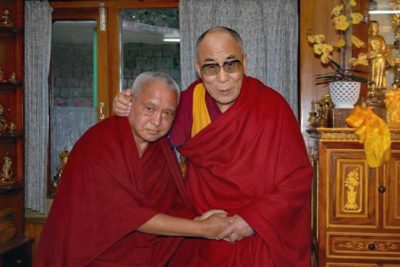
Further, anyone can imagine blissful blue light emanating from the Medicine Buddha’s heart, filling the body and mind with healing light. An actual Medicine Buddha initiation makes the mantra more powerful it is said because the transmission of the mantra is come downs through an unbroken lineage from Shakyamuni Buddha.
However, it is not required to have an initiation to say the mantra. You could also imagine that the nectar from the Medicine Buddha’s bowl fills you and heals you as you repeat the mantra quietly. The belief in the power of the practice is more important than the details.
However, it is taught that the mantra itself is highly blessed, as is the name Medicine Buddha, and so the benefit is considered different, and superior, to for example repeating the name flower, flower, flower and expecting healing results.
The most important thing is our motivation of loving kindness and compassion, for Buddhism teaches that true healing comes through these altruistic motivations.
What the mind believes is very important
In “Ultimate Healing” Lama Zopa does make the point that he’s personally observed recovery from serious illness simply by someone visualizing healing white light.
What the mind believes is very important, and having a positive motivation is essential.
As Mahayana Buddhists we believe in the powers of these various Buddhas and remember that the Medicine Buddhas prayed extensively and for many ages to be able to benefit beings in this particular period of time: known as the degenerate time; a quarrelsome period in which peoples’ ethics and morality decline, and truth becomes harder and harder to be believed in, with lies often replacing and taking over the role of truth.
One needn’t look far to see this happening today on a grand scale and at the highest levels of societies and governments.
Looking at a picture of the main Medicine Buddha can be helpful
Looking at a picture of the main Medicine Buddha can be helpful. It is considered even more beneficial if you can memorize the image of the Medicine Buddha and then visualize him: he is blue in color[17], signifying his omniscient wisdom, and his body radiates blue light.
His right hand is in the mudra (or gesture) of granting sublime realizations and rests on his right knee, and he holds the stem of an arura plant (also called a Myrobalan plant with aruna fruit) between his thumb and index finger.
His left hand is in the mudra of concentration and he holds a lapis lazuli bowl filled with nectar. He wears the three robes of a monk and is seated in the vajra position.
The eight Medicine Buddhas
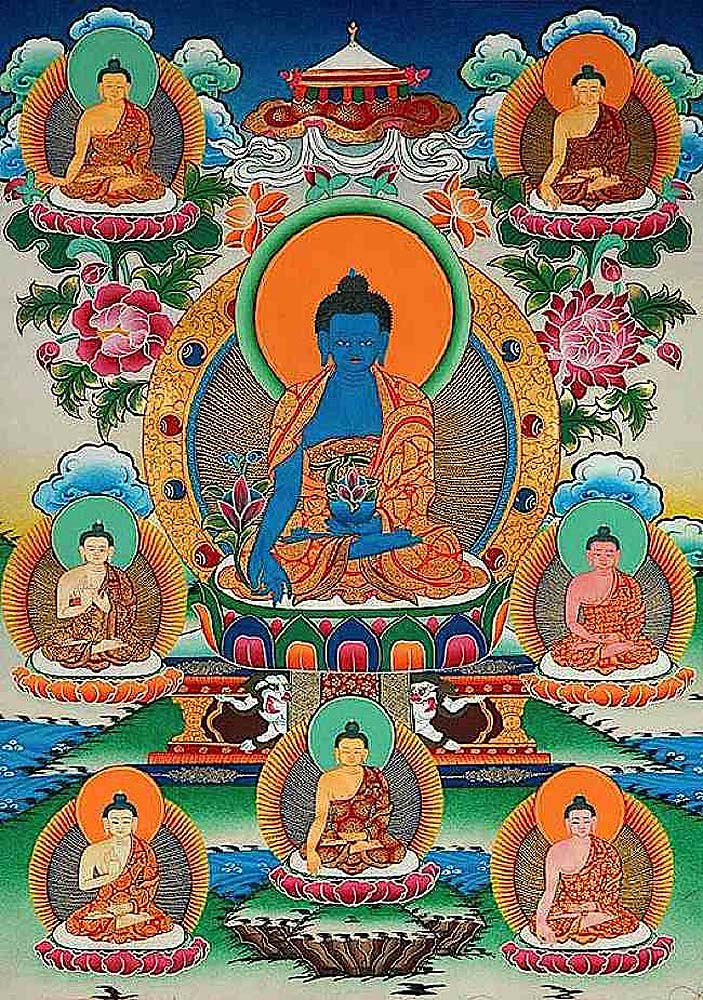
In the Tibetan Buddhist sutra, the “Concise Essence Sutra Ritual of Bhagavan Medicine Buddha called The Wish Fulfilling Jewel”, by Panchen Losang Chokyi Gyaltsen, there are seven Medicine Buddhas plus Shakyamuni Buddha.
This is the version used at Maitreya Institute and its FPMT sister centers around the world.
The eight Medicine Buddhas are:
- Bhaisajyaguru (blue) Tathagata[19] Medicine Guru Lapis Lazuli King
- Abiyaraja (coral) Tathagata King of Clear Knowing
- Dharmakirtisagara (white) Tathagata Melodious Ocean of Proclaimed Dharma
- Asokottamasriraja (pink) Tathagata Supreme Glory Free from Sorrow
- Suvarnabhadradravimala (gold) Tathagata Stainless Excellent Gold
- Suaragosaraja (gold) Tathagata King of Melodious Sound
- Suparikirti-tanamasriraja (gold) Tathagata/Buddha Renowned Glorious king of Excellent Signs
- Shakyamuni Buddha (gold) Tathagata Glorious Conqueror
The Path to Healing
In “Ultimate Healing”, Lama Zopa explains that there are three main factors which are important in healing: faith, compassion and morality[20]. He continues, asserting that
“since everything comes from the mind, the mind itself is fundamental to healing disease. Like the teachings of Buddha, Tibetan and Chinese medical texts explain that all diseases originate in the mind and relate sickness to three fundamental delusions: ignorance, anger and attachment. The very root of disease- and of all other suffering- is ignorance, specifically ignorance of the ultimate reality of phenomena…. The medicine we use is the realization of emptiness, the ultimate nature of phenomena[21].”
So, because we create stress worrying, the idea is to look for this stress or even for the person experiencing problems or illness…. The more you look, the more you can find no person, problem or illness existing from its own side. This lack of findability releases our mind from the prison of believing in everything as being fixed and permanent.
“Realizing that the I is completely empty from its own side is realizing emptiness, or ultimate truth, of the I[22].”
“By meditating on emptiness, we use our own skillful thinking to eliminate our disease and other problems. Realizing the emptiness of the I is a powerful meditation for purification and healing; it is a powerful way to find peace, because it eliminates all our unnecessary worry and fear[23].”
“Understanding how our illness and all our other problems come from our mind is an important point in healing, because if something comes from our mind, we can control it, we can change it[24].”
“Compassion is the best healer” Lama Zopa
Rereading Lama Zopa’s “Ultimate healing” again has felt like a trip down and through my own Buddhist path. Less than 10% of the book is devoted to the Medicine Buddha, and this is because there are other deities or Buddhas one can pray to, like White Tara or Shakyamuni Buddha, but also because the mind itself is so important; then one’s positive personal motivation is needed, and even better if the motivation is altruistic, because ultimately, compassion is the healer.
Compassion for one’s self and compassion for others. This has been my own experience as I continue to learn to better love myself and others. I’ll need the rest of this life and then some, but it feels right and so I try not to worry about how long… It doesn’t really matter at the end of the day.
“Our ultimate healing comes from our own good heart” Lama Zopa
In his book Lama Zopa says that
“compassion is the best healer. The most powerful healing comes from developing compassion for all other living beings, irrespective of their race, nationality, religious belief, or relationship to us[25].” “By healing our mind with great compassion, we will be able to solve all our problems and those of others[26].”
“No matter what meditation or other technique we use, the ultimate healing method involves our own mind, our own good heart…. While deity practices can help us receive blessings, the main practice is protecting our mind in our daily life[27].”
Watching our own mind and practicing having a good heart is something we can all do to help heal whatever problems or illness we may have, and it makes the world a better place to live in.
Happy holidays and have a wonderful and healthy 2020!
- Lama Zopa Rinpoche (2001) Ultimate Healing: The Power of Compassion. Somerville: Wisdom Publications.
- The concise essence sutra ritual of Bhagavan Medicine Buddha called The Wish-Fulfilling Jewel, composed by Panchen Losang Chökyi Gyältsen
Notes
[1] Source: Bodhisattva Manjushri at Buddha Tooth Relic Temple and Museum, Singapore
[2] www.buddhanet.net/pdf_/file/medbudsutra.pdf p.17
[3] www.buddhanet.net/pdf_/file/medbudsutra.pdf p.17-18
[4] Source: This 19th century painting depicts biographical episodes from the life of the Buddhist monk, Shantarakshita, particularly highlighting his journey to Tibet where he was instrumental in establishing Buddhism. The vignettes are arranged chronologically beginning in the top-right of the painting and proceeding clockwise.
[5] www.goldenbuddha.net/medicine-buddha-statues
[6] https://tibetanmedicine-edu.org/tmm/mbhp/medicine-buddha-healing-practices/medicine-buddha-healing-practice/
[7] Source: Medicine Buddha
[8] Source: The concise essence sutra ritual of Bhagavan Medicine Buddha called The Wish-Fulfilling Jewel, composed by Panchen Losang Chökyi Gyältsen
[9] Lama Zopa Rinpoche (2001) p. 7.
[10] Lama Zopa Rinpoche (2001) p. 6.
[11] www.lionsroar.com/medicinebuddha
[12] Bhaisajyaguru
[13] www.buddhaweekly.com/the-first-doctor-medicine-buddha-bhaisajyaguru
[14] www.fpmt.org/lama-zopa-rinpoche-news-and-advice/lama-zopa-rinpoche-medicine-buddha-mantra
[15] www.lamayeshe.com/article/chapter.medicine-buddha-mantra
[16] The FPMT is a worldwide organization of more than 150 meditation centers, hospitals and universities around the world. The spiritual head of the FPMT is Lama Zopa Rinpoche.
[17] Images of the Medicine Buddha outside of Tibet are traditionally portray him as golden in color.
[18] Source: The eight Medicine Buddhas
[19] Tathagata means Buddha.
[20] Lama Zopa Rinpoche (2001) p. 57.
[21] Lama Zopa Rinpoche (2001) p. 67.
[22] Lama Zopa Rinpoche (2001) p. 74.
[23] Lama Zopa Rinpoche (2001) p. 75.
[24] Lama Zopa Rinpoche (2001) p. 77.
[25] Lama Zopa Rinpoche (2001) p. 145.
[26] Lama Zopa Rinpoche (2001) p. 8.
[27] Lama Zopa Rinpoche (2001) p. 165.

